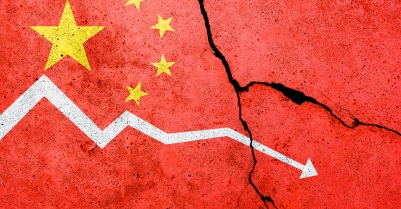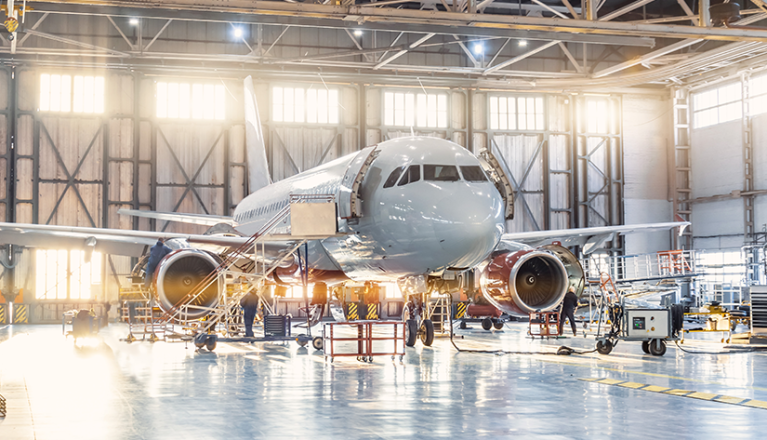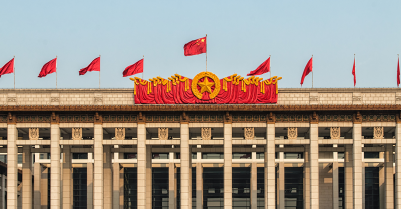-
View article
 #Economy
#EconomyChina: confidence, price war and credibility are the watchwords in this early part of the year
2024/03/26

There is no question as to the severity of the crisis that has grounded just about all the world’s aircraft and shuttered aircraft manufacturing facilities. However, it appears that orders for new aircraft have been deferred rather than cancelled en masse. French production is now resuming on the basis of two eight-hour shifts per day rather than three, including Fridays, Saturdays and Sundays, to comply with new safety measures. In China, domestic traffic is picking up again.
Against this backdrop, and with 2019 marred by the Boeing 737 MAX industrial accident, on 9 June the French Government announced an aviation industry recovery package whose ambitions seem to extend well beyond managing the COVID-19 crisis. We’ll unpack what this means below.
Short-term: limit job losses
Domestically speaking, the picture is quite clear: the sector strengthens local economies, accounting for 300,000 jobs, 200,000 of them direct, including 35,000 engineers. This industry – which powers not only Occitanie and Aquitaine but also Normandy, the entire Atlantic seaboard, the Rhône valley and the Paris region – has helped create large numbers of new jobs, with 58,000 new recruits taken on over the past five years. Given the reduction in the rate of production, it has been confirmed that new long-term part-time working arrangements will be in place from early July to avoid the double whammy of layoffs and the corresponding loss of expertise.
With 85% of sales going to export markets, aircraft manufacturing is also the number one contributor to France’s foreign trade surplus. The sector therefore plays a crucial role in maintaining France’s performance in international trade. Financial support schemes for export business are thus clearly aimed at locking in demand. Export guarantees totalling €3.5 billion for airlines consist of a two-part system. Firstly, there will be a 12-month moratorium on the repayment of export credits already granted. Secondly, for new purchases of Airbus aircraft, a proposal to temporarily ease repayment terms will be put to the European Commission. Lastly, France’s defence procurement agency, the DGA (Direction Générale de l’Armement), will also be helping keep the industry’s wheels turning by bringing forward a number of orders for military aircraft, including A330 MRTT tanker aircraft and helicopters.
Medium-term: focus strengths and rationalise resources to hold positions
Beyond government-backed loans and short-term measures, the subcontracting chain has already been consolidating for a number of years.
A dedicated €1 billion fund to assist the aviation value chain – funded by customers Airbus, Safran, Thales and Dassault alongside the state through Bpifrance – is to be created to ready the supply chain for the manufacturing challenges of the future. This equity investment fund is intended to help subcontractors consolidate and restructure to form industrial platforms able to support international competition and protect French businesses.
In addition to this fund, the government is to release another €300 million to support diversification, modernisation and environmental transformation for SMEs and mid-tier enterprises. This funding will support automation and digitalisation projects.
Long-term: building a brighter future for the industry
Over the past few years, the priority has been to ramp up the rate of production for programmes already brought to market. Manufacturers and carriers had already glimpsed the next stage: the development of new programmes that mark a technological break from the last generation of neo and MAX aircraft. Lowering carbon intensity was already at the forefront of concerns before the crisis.
The crisis has therefore given such projects a serious boost, with research programmes set to receive €1.5 billion of public finance over the next three years. There will be a decisive shift in the focus of research, with a renewed emphasis on hydrogen technologies in particular. This effort, which would not have been possible if not for the COVID-19 crisis, is also intended to safeguard research capability and ensure continued employment for the sector’s 35,000 engineers.
When it comes to competition, the next generation of aircraft, which will have to incorporate disruptive technologies, will wipe the slate clean or at least introduce handicaps. Research will focus on areas traditionally ignored by the industry. In the starting blocks will be countries – notably in Asia – whose ambitions in aviation are clear and which have significant human and other resources at their disposal. Under these circumstances, it will be critical that the sector maintain its cohesion, even if the future for certain individual players will no doubt involve some pain.
Pascale Rombaut-Manouguian










